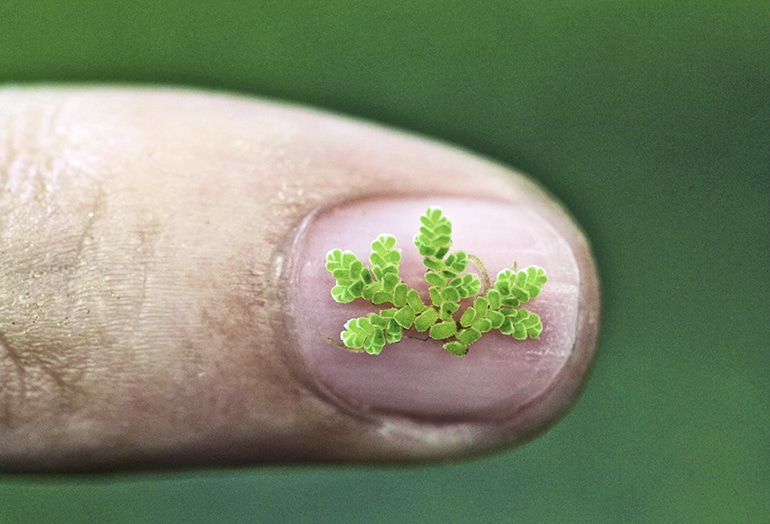Scientists have sequenced the full genome of a tiny fern with leaves the size of gnats that could help in cutting atmospheric carbon dioxide, fixing nitrogen in agriculture, and shooing insects from crops.
Azolla filiculoides is a water fern often found fertilizing rice paddies in Asia, but its ancestry goes much further back.
“Fifteen million years ago, Earth was a much warmer place. Azolla, this fast-growing bloom that once covered the Arctic Circle, pulled in 10 trillion tons of carbon dioxide from our planet’s atmosphere, and scientists think it played a key role in transitioning Earth from a hot house to the cool place it is today,” says Fay-Wei Li, a plant evolutionary biologist at Boyce Thompson Institute, adjunct assistant professor of biology at Cornell University, and lead author of the paper, which appears in Nature Plants.

While sequencing the genome, the scientists identified a fern-specific gene shown to provide insect resistance.
“In general, insects don’t like ferns, and scientists wondered why,” says Li, who explains that one of the fern’s genes likely transferred from a bacterium. “It’s a naturally modified gene, and now that we’ve found it, it could have huge implications for agriculture.”
Genetic ‘control system’ beefs up crop defenses
Nitrogen fixation is the process by which plants use the chemical element as a fertilizer. While plants can’t fix nitrogen by themselves, Li says, the genome reveals a symbiotic relationship with cyanobacteria, a blue-green phylum of bacteria that obtain their energy through photosynthesis and produce oxygen. Special cavities in the Azolla leaf host cyanobacteria to fix nitrogen, while the plant provides sugary fuel for the cyanobacteria.

“With this first genomic data from ferns, science can gain vital intelligence for understanding plant genes,” Li says. “We can now research its properties as a sustainable fertilizer and perhaps gather carbon dioxide from the atmosphere.”
Ferns are notorious for having large genomes, some as large as 148 gigabases, or the equivalent of 148 billion base pairs of DNA sequences. On average, fern genomes are 12 gigabases—a reason why scientists have not sequenced one, until now. The Azolla is .75 gigabases.
How farming screwed up Midwest carbon storage
Kathleen M. Pryer of Duke University is senior author of the paper. The National Science Foundation, the German Research Foundation, and the Beijing Genomics Institute funded the work.
Source: Cornell University



